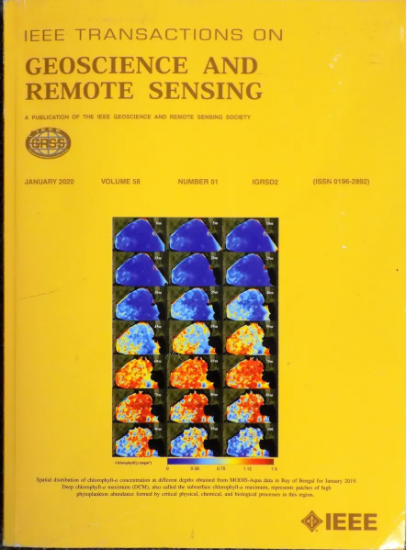融合GNSS-PWV和雷达回波观测的深度学习降水临近预报模型
IF 7.5
1区 地球科学
Q1 ENGINEERING, ELECTRICAL & ELECTRONIC
IEEE Transactions on Geoscience and Remote Sensing
Pub Date : 2025-03-26
DOI:10.1109/TGRS.2025.3554745
引用次数: 0
摘要
临近预报在灾害预警系统中起着至关重要的作用,最近深度学习的进展在提高这种预测的准确性和及时性方面显示出巨大的潜力。本研究提出了一种新的基于深度学习的降水临近预报模型,该模型将全球导航卫星系统(GNSS)衍生的可降水量(PWV)数据与雷达观测数据相结合。该模型引入了两个关键创新:多源数据融合和时维关注机制。这些进步增强了模型准确预测降水事件的能力,特别是在具有高降雨强度的挑战性条件下。在使用香港雷达和GNSS数据进行的对比实验中,该模型结合了数据融合和注意机制,在30 mm/h阈值下,表现出最佳的整体性能,关键成功指数(CSI)得分提高了26%,Heidke技能得分(HSS)得分提高了23%。有效模拟了降雨区域及其变化趋势,体现了GNSS PWV数据与雷达观测数据的互补价值。本文章由计算机程序翻译,如有差异,请以英文原文为准。
A Deep Learning-Based Precipitation Nowcasting Model Fusing GNSS-PWV and Radar Echo Observations
Nowcasting plays a critical role in disaster warning systems, and recent advancements in deep learning have shown great potential in improving the accuracy and timeliness of such predictions. This study proposes a novel deep learning-based model for precipitation nowcasting, which integrates global navigation satellite system (GNSS)-derived precipitable water vapor (PWV) data with radar observations. The model introduces two key innovations: multi-source data fusion and time-dimension attention mechanism. These advancements enhance the model’s capability to accurately forecast precipitation events, particularly under challenging conditions with high rainfall intensity. In comparative experiments conducted using radar and GNSS data from Hong Kong, the model, incorporating both data fusion and the attention mechanism, demonstrated the best overall performance, with critical success index (CSI) scores increasing by 26% and Heidke skill score (HSS) scores by 23% at the 30 mm/h threshold. Moreover, it effectively simulates rainfall regions and their changing trends, demonstrating the complementary value of GNSS PWV data to radar observations.
求助全文
通过发布文献求助,成功后即可免费获取论文全文。
去求助
来源期刊

IEEE Transactions on Geoscience and Remote Sensing
工程技术-地球化学与地球物理
CiteScore
11.50
自引率
28.00%
发文量
1912
审稿时长
4.0 months
期刊介绍:
IEEE Transactions on Geoscience and Remote Sensing (TGRS) is a monthly publication that focuses on the theory, concepts, and techniques of science and engineering as applied to sensing the land, oceans, atmosphere, and space; and the processing, interpretation, and dissemination of this information.
 求助内容:
求助内容: 应助结果提醒方式:
应助结果提醒方式:


